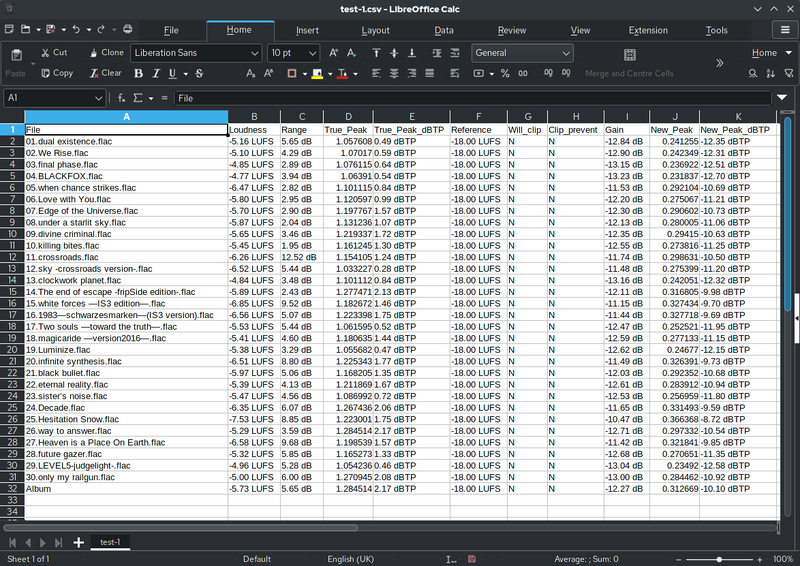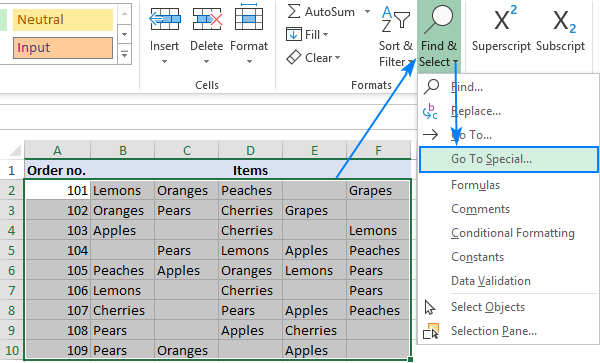Fascination About Excel Links Not Working
Table of ContentsExcel Links Not Working - An OverviewThe Basic Principles Of Excel Links Not Working Facts About Excel Links Not Working UncoveredThe Ultimate Guide To Excel Links Not WorkingExcitement About Excel Links Not Working

Selection computation features like either can not manage entire column recommendations or determine all the cells in the column. User-defined features do not automatically acknowledge the last-used row in the column as well as, for that reason, often compute whole column referrals inefficiently. It is simple to program user-defined features so that they identify the last-used row.

7 Simple Techniques For Excel Links Not Working
Using the formula for a dynamic array is generally preferable to the formula due to the fact that has the drawback of being a volatile feature that will be calculated at every recalculation. Performance reduces due to the fact that the feature inside the vibrant array formula need to examine lots of rows. You can lessen this performance decline by keeping the component of the formula in a different cell or defined name, and afterwards referring to the cell or name in the vibrant array: Counts!z1=COUNTA(Sheet1!$A:$A) Offset, Dynamic, Range=OFFSET(Sheet1!$A$ 1,0,0, Counts!$Z$ 1,1) Index, Dynamic, Range=Sheet1!$A$ 1: INDEX(Sheet1!$A:$A, Counts!$Z$ 1+ROW(Sheet1!$A$ 1) - 1,1) You can likewise utilize functions such as to construct dynamic ranges, but is volatile and also always determines single-threaded.
Making use of numerous dynamic arrays within a solitary column needs special-purpose counting functions. Making use of lots of vibrant varieties can reduce efficiency. In Office 365 variation 1809 and also later on, Excel's VLOOKUP, HLOOKUP, as well as MATCH for precise suit on unsorted data is much faster than ever before when seeking out several columns (or rows with HLOOKUP) from the exact same table variety.
If you utilize the precise suit choice, the computation time for the feature is proportional to the number of cells scanned before a match is found. Lookup time utilizing the approximate match choices of,, as well as on arranged data is rapid and is not significantly raised by the size of the array you are looking up.
The Best Strategy To Use For Excel Links Not Working
Ensure that you understand the match-type as well as range-lookup alternatives in,, as well as. The adhering to code instance shows the phrase structure for the feature. MATCH(lookup value, lookup variety, matchtype) returns the largest match less than or equivalent to find out here the lookup worth when the lookup array is sorted ascending (approximate match).
The default choice is approximate suit sorted rising. The adhering to code instance reveals the syntax for the and also functions.
VLOOKUP(lookup value, table array, col index num, range-lookup) HLOOKUP(lookup value, table range, row index num, range-lookup) returns the biggest suit less than or equal to the lookup value (approximate suit). This is the default choice. Table variety need to be arranged ascending. requests a precise match hop over to these guys and presumes the data is not arranged.
Little Known Facts About Excel Links Not Working.
If your information is sorted, however you desire an exact suit, see Usage 2 lookups for sorted data with missing out on values. Attempt using the and also works as opposed to. Is somewhat much faster (roughly 5 percent much faster), simpler, and also makes use of less memory than a combination of and also, or, the added flexibility that and also offer typically allows you to significantly save time.
The function is fast and is a non-volatile function, which accelerates recalculation. The feature is additionally fast; however, it is an unpredictable feature, as well as it sometimes considerably boosts the moment taken to process the computation chain. It's simple to transform to and. The following 2 statements return the very same solution: VLOOKUP(A1, Information!$A$ 2:$F$ 1000,3, False) INDEX(Data!$A$ 2:$F$ 1000, SUIT(A1,$A$ 1:$A$ 1000,0),3) Due to the fact that specific match lookups can be slow, take into consideration the adhering to choices for enhancing performance: Use one worksheet.
When you can, the data initially (is rapid), as well as use approximate suit. When you must make use of a specific suit lookup, limit the range of cells to be scanned to a minimum. Usage tables and also structured references or dynamic range names as opposed to describing a multitude of rows or columns.
The Greatest Guide To Excel Links Not Working
2 approximate suits are substantially faster than one exact match for a lookup over even more than click a couple of rows. (The breakeven point is regarding 10-20 rows.) If you can arrange your information yet still can not use approximate suit since you can not make sure that the value you are looking up exists in the lookup range, you can utilize this formula: IF(VLOOKUP(lookup_val, lookup_array,1, Real)=lookup_val, _ VLOOKUP(lookup_val, lookup_array, column, Real), "notexist") The first part of the formula functions by doing an approximate lookup on the lookup column itself.
VLOOKUP(lookup_val, lookup_array, column, Real) If the response from the lookup column did not match the lookup value, you have a missing value, as well as the formula returns "notexist". Realize that if you look up a worth smaller sized than the tiniest worth in the listing, you get an error. You can handle this mistake by utilizing, or by adding a small examination worth to the listing.
Starting with Excel 2007, you can utilize the function, which is both straightforward as well as fast. IF IFERROR(VLOOKUP(lookupval, table, 2 FALSE),0) In earlier versions, a straightforward however slow way is to use a function that includes 2 lookups. IF(ISNA(VLOOKUP(lookupval, table,2, FALSE)),0, _ VLOOKUP(lookupval, table,2, FALSE)) You can avoid the dual precise lookup if you make use of precise once, save the lead to a cell, and afterwards examine the result prior to doing an.